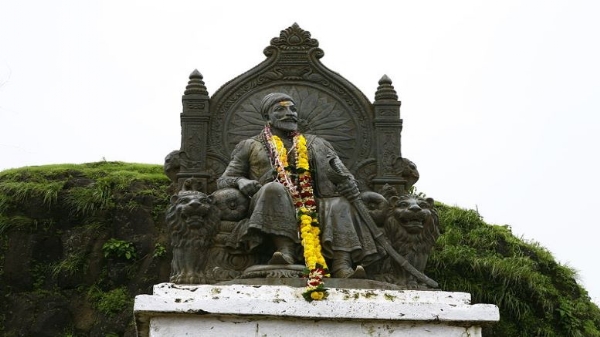Chhatrapati Shivaji Maharaj - A great administrator as well!
Chhatrapati Shivaji Maharaj was not just the Greatest ruler but a great administrator as well. He was also a benevolent administrator.
Total Views |
Chhatrapati Shivaji Maharaj was King with foresight (doordrishti). Maharaj was not just the Greatest ruler but a great administrator as well. He was also a benevolent administrator. He was not merely a daring soldier and successful military conqueror but also an enlightened ruler of his people.”
Maharaj was readily accessible to his all subjects. He was a popular monarch. He kept a close watch on the administrative affairs of the state. All powers were concentrated on him but he ruled with the advice of his ministers. The common people regarded him with great devotion.

The general features of Shivaji’s administration:
1. He employed members of all castes and tribes to maintain balance among them.
2. He assigned separate responsibilities to the ministers and each of them was made responsible for his work to him.
3. He made no office hereditary.
4. In general he did not assign jagirs to his civil and military officers.
5. He gave special attention towards the administration of the forts.
6. In matters of administration, he gave superior position to his civil officers as compared to military officers.
7. He established Ryotwari system in revenue administration. The state kept direct contact with the farmers.
Maharaj took special care to make his administrative system responsive to the needs of the people. The institutions which he established were an improvement upon the existing order and were well adapted to the well-being of his subjects.
Central Administration:
On the occasion of the Maharaj coronation ceremony held in 1674 at Rajgad fort by the Pandit Gaga bhatt, Maharaj introduced Maratha empire's Administration System commonly known as AshtaPradhan Mandal meaning “the council of eight” . The eight Ministerial roles were as follows.
Pantpradhan or Peshwa - Prime minister, General Administrator of empire
Amatya- Finance Minister managing accounts for empire
Sacheev- Secretory of state
Waqia-Navis - Interior Minister, managing internal affairs especially intelligence and espionage
Sarnaubat/Senapati- Commander-in-chief managing the forces and defense of the Empire.
Sumant/Dubeer - Foreign Minister, to manage relationships with other sovereigns.
Nyayadhish- Chief Justice
Panditrao - High priest, managing internal religious matters.The duties of the Panditrao were to promote learning and in the Ashta Pradhan, known as Senapat or Sarnobat, he was to watch over the interests of his officers.
In the later era of the Maratha Empire, these deputies and their staff constituted the core of the Peshwa's bureaucracy.
Provincial administration:
Shivaji divided his kingdom into four provinces. Each province was under the head called Mamlatdar or Viceroy. Each province was divided into several districts and villages. The village was an organised institution.
Army administration:
Maharaj’s army organisation was very efficient. His army was very patriotic, well trained, efficient and extremely mobile. He introduced the following reforms in the army:
1. Regular army: He maintained a regular army. In the traditional military organisation, the soldiers served army for six months and thereafter, they worked in their fields. Now the soldiers were to serve around the year.
2. Cash payment: He paid the soldiers in cash.
3. Patriotism: He inspired the soldiers with patriotism.
4. Merit: He recruited the soldiers on merit.
5. Branding of horses: He introduced the system of branding the horses and keeping the identification of the soldiers.
6. Discipline: He enforced strict discipline.
7. Guerilla warfare: He trained his soldiers in the guerilla warfare. The guerilla warfare was very suitable in the geographical location of most territories in Maharashtra. He believed in the surprise attacks on the enemy, killed or looted it and disappeared into the forest.
8. Forts: He paid particular attention to the maintenance of forts. Old forts were repaired and new forts built. The forts also served as military cantonments. About the sanctity of forts it is said that the “people were taught to regard them as their mother.” There were about 280 forts. The inhabitants of the surrounding villages took protection in these forts.
(The article is based on a Quora answer)
(The article is based on a Quora answer)

